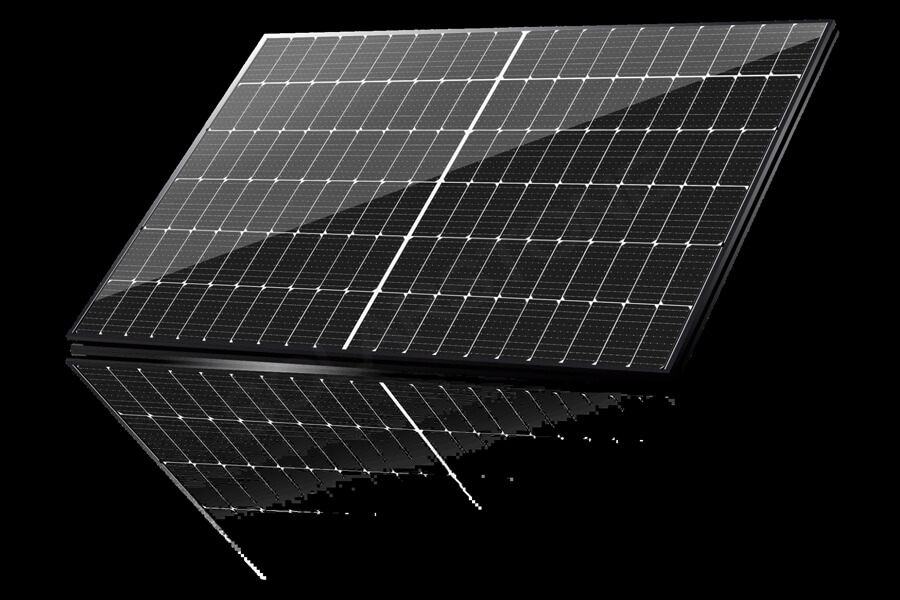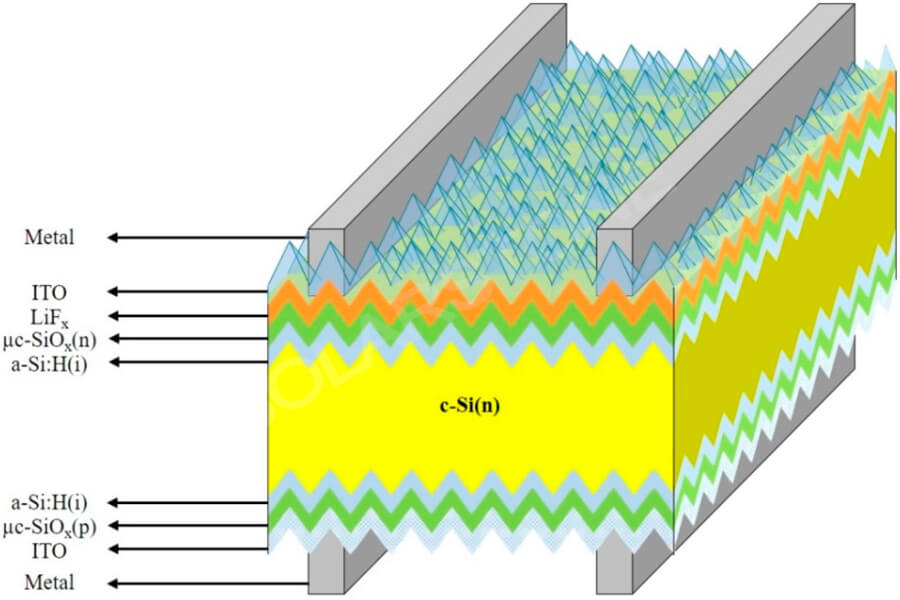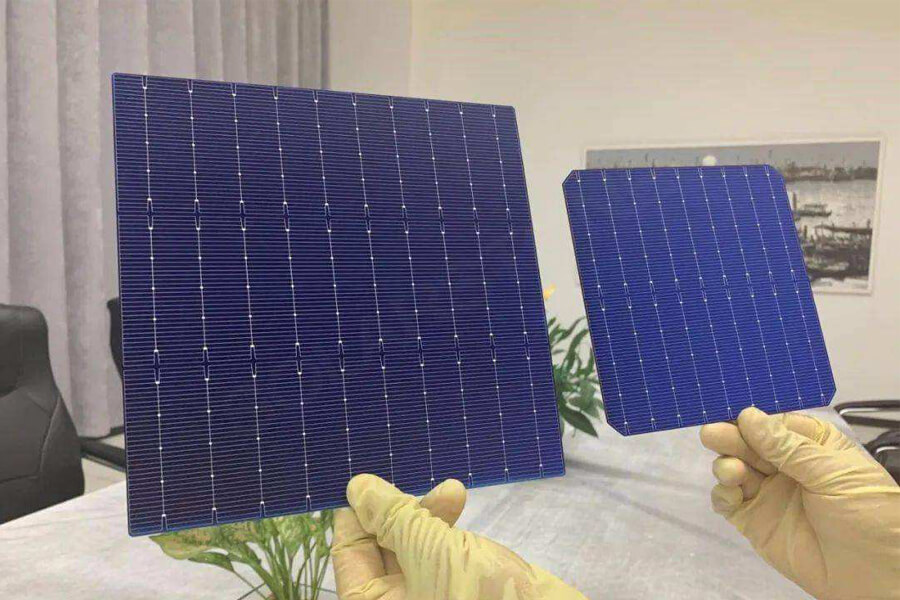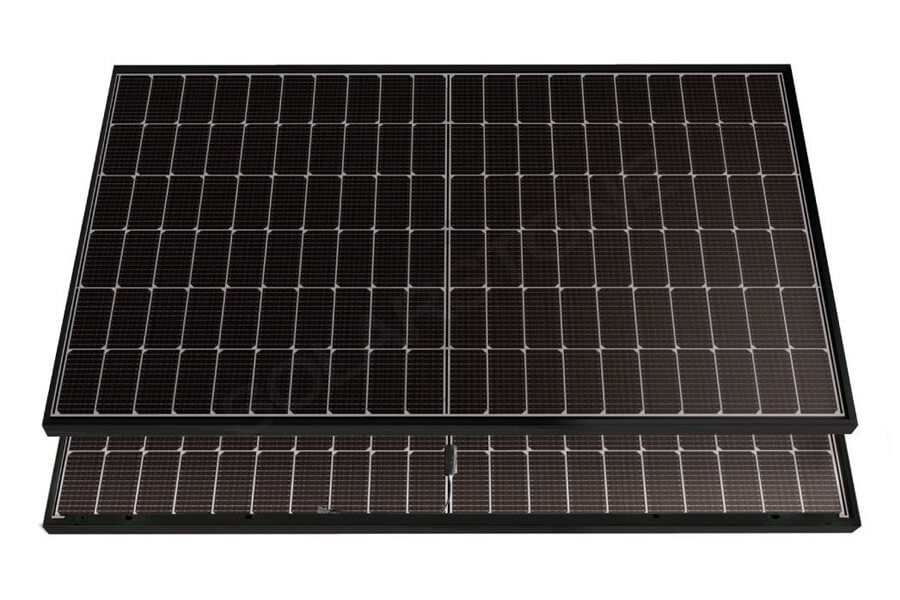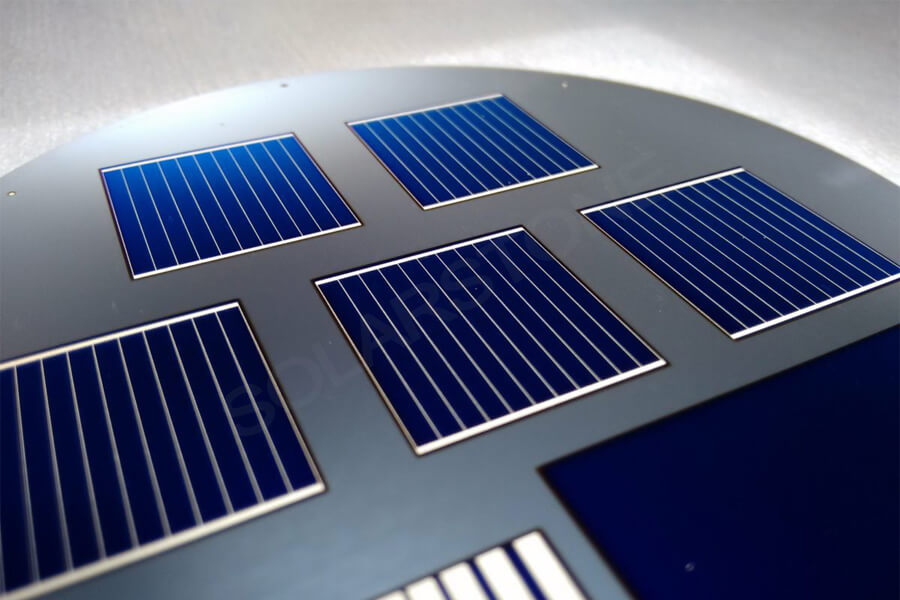Heterojunction and traditional crystalline silicon panel
The heterojunction technology is based on the traditional c-Si panel, which improves the composite process and other major defects.
Heterojunction solar panels improve the defects in standard c-Si modules and reduce surface recombination. This technology has higher recording efficiency and improves the service life of the module. Due to these improvements, the HJT panel has a lower temperature coefficient and thus has better performance at different extreme temperatures.
Heterojunction and double-sided panel
The structure of double-sided solar panels is similar to that of heterojunction solar panels. Both include passivation coating, which can reduce re-surface combination and improve its efficiency.
HJT technology has a high recording efficiency of 26.7%, but the efficiency of double-sided is more than 30%. Strangely, the double-sided photovoltaic module used to achieve this efficiency combines HJT technology with double-sided and other technologies.
HJT cells can be designed for single-sided or double-sided use, which reduces the reason for comparing them with each other, because they can be combined to produce excellent double-sided HJT solar panels. The main difference is that other basic technologies different from heterojunction technology can be used on both sides.
Summary: What are the advantages of heterojunction panel?
Heterojunction solar panels may be very useful because they have improved technology and have great potential in the solar industry. These are some of the main benefits of this technology.
High efficiency
The conversion efficiency of single-sided modules is 26.07%, and that of double-sided modules is more than 30%. Heterojunction has become one of the most efficient solar technologies in the industry. This makes it convenient for applications in areas with limited space and large power generation capacity.
Good temperature coefficient
Heterojunction solar cell technology is less affected by temperature changes. This makes it very suitable for high temperature applications, which will have a negative impact on the performance of standard c-Si modules.
High duplex
The heterojunction battery has a high two-sided coefficient of 92%, which makes the heterojunction have excellent performance when it is designed as a two-sided module. This technology is becoming more and more popular in utility scale applications seeking to utilize albedo resources.
Simple manufacturing process
There are additional steps in the manufacturing process of heterojunction solar cells, but this will not greatly increase the cost. This technology only involves 5-7 steps in the manufacturing process, and the price of the required equipment is continuously decreasing, which shows the great hope of HJT in the future.
Typical applications of heterojunction solar technology
Heterojunction solar panels are widely used, which opens the way for the solar industry to further increase the application of solar energy. These are some of the most common applications of this technology.
(1) Limited space applications (solar tiles and BIPV)
The high conversion efficiency of HJT makes it very suitable for limited space applications. Two popular applications are solar tile manufacturing and photovoltaic building integration (BIPV) products, which greatly improve the solar efficiency of photovoltaic households.
(2) Power supply of wearable device
Reducing the size of the wafer-based layer can open the way for the integration of HJT technology and wearable devices. This will provide power for the equipment to extend its autonomy during the day.
(3) Utility scale application
Conventional single-sided heterojunction solar panels can be used for utility scale applications, especially for double-sided heterojunction solar panels. This will lead to an average efficiency of more than 30% of solar power plants, which can not only use direct sunlight, but also use albedo resources.
Looking forward to the future of heterojunction technology
Heterojunction is a promising technology with high recording efficiency. This technology paves the way for the solar industry to improve the efficiency of daily photovoltaic modules and reduce the levelized energy cost (LCOE) of solar power generation.
The solar energy industry produced 5GW of heterojunction solar panels in 2019, making HJT technology account for about 5% of the retail market, but this figure is expected to increase in the future. The expected price in 2029-2030 is US $0.19/W, and HJT technology can occupy 15% of the retail market.
One of the main constraints of heterojunction technology is the current manufacturing process and material cost. With the development of technology and the research of other materials, this may not be a promise in the future. It can also improve the efficiency of heterojunction solar panels and reduce costs.


